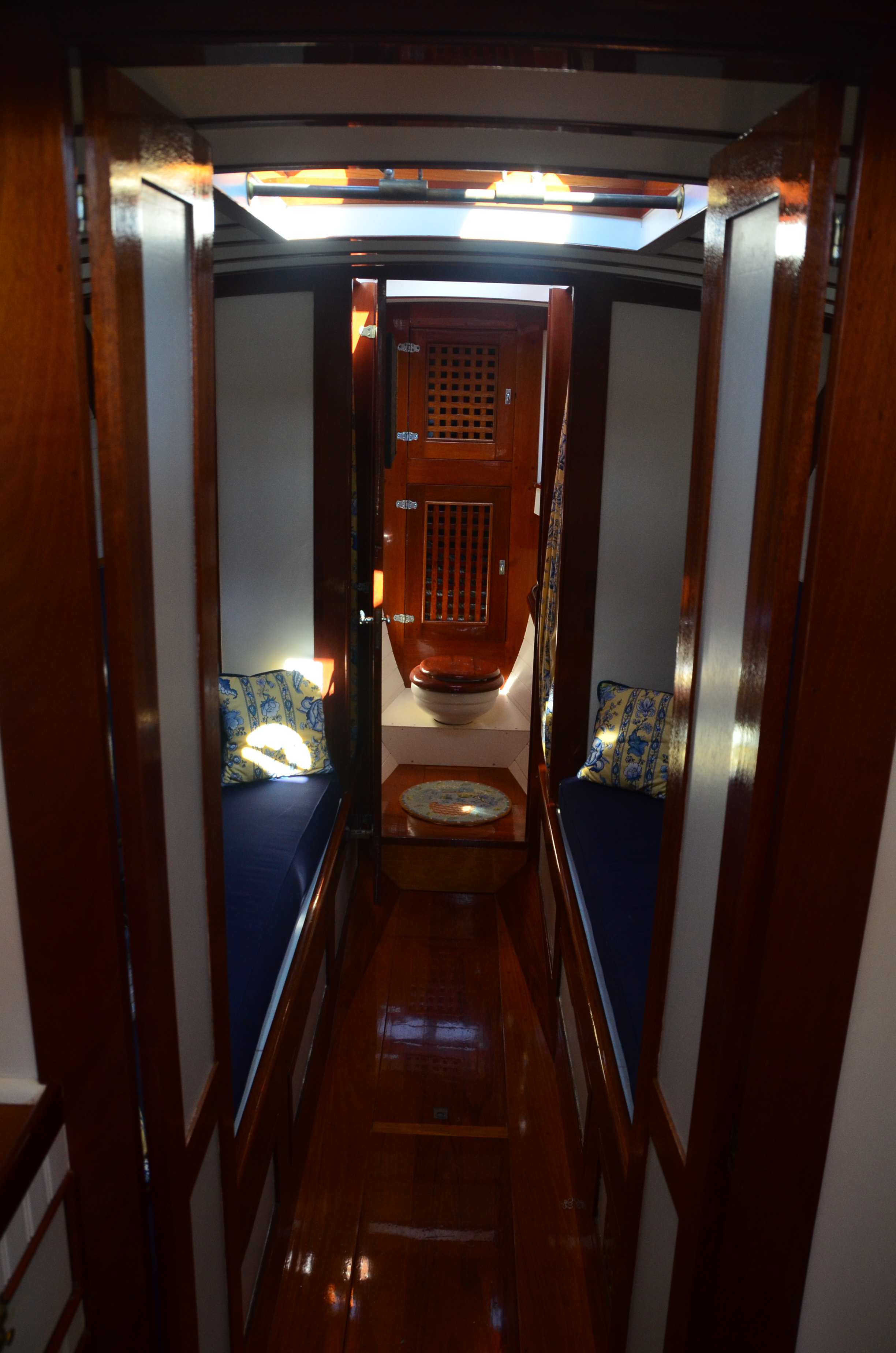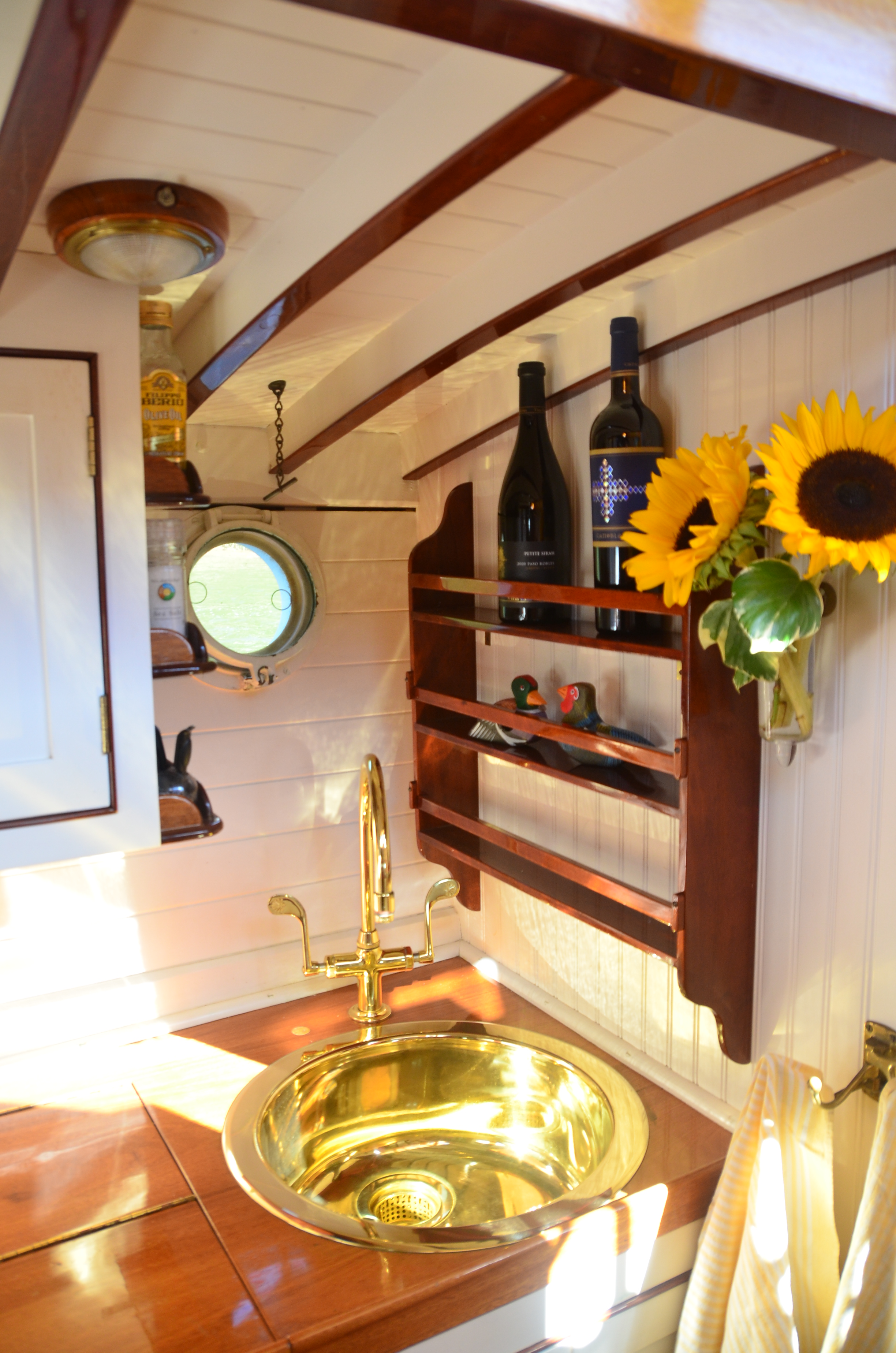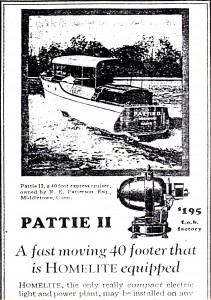
Figure 1, PATTIE II, (original plan 1924)
NISCA’s original main saloon was open with a pipe frame and canvas top (see Figure 1). The second owner, William J. Malone, changed the house to that seen in Figure 2. It was built by the Wyman Shipyard sometime in the 1930’s for $18-1900.
This house and the motor were replaced sometime in the 1950’s by Carl O. Anderson who is said to have hired Winthrop Warner, of Middletown, CT, who worked both at the Portland Yacht Yard and as a draftsman for William H. Hand. Various stories conclude that the design was completed but the original contract was incomplete and the boat was moved into the hands of Don Reynolds (no relation to Tucker Reynolds) of Reynolds’ Garage & Marine, Hamburg Cove, CT, who finished the project. Don’s son, Leland, recalled the boat being in his father’s care for many years. It was in the south shed in Hamburg Cove when Ted Crosby found it in the summer of 1989 and Leland told the history.
Figure 2, NISCA II circa 1940
Carl R. Anderson told his father’s story about when the Sterling FS motor threw a connecting rod in the Connecticut River and had to be replaced. GM provided a turbo, GM471-T, motor the first marinized GM 471 to be used in a yacht (Carl R. Anderson, 1990) and powered NISCA until 1986 when Chris Kyle said the turbo failed while he was in Florida. He repaired it and returned to Connecticut. Ted Crosby replaced it all with the present turbo, intercooled, 235hp, Isuzu MTC-3, 6 cylinder diesel.
Figure 3, NISCA 1988, Miami, FL
During the most recent restoration Ted Crosby removed the 1950’s style house (fig. 3) and replaced it with what was believed to be more in keeping with enclosed raised panel, mahoghany, 1930’s cabin (fig. 2). The three photographs above were all that emerged of previous versions of NISCA’s prior construction. No plans or drawings were available. A fire at the Portland Yard was said to have destroyed all plans. Hart Nautical Collections, MIT Museum, Cambridge, Massachusetts, was unable to supply any information at the time of restoration.
Figure 4, NISCA, 2009-present (photo: Ben Mendlowitz)
1989-95 Restoration starts at Reynolds Garage and Marine, Lyme, CT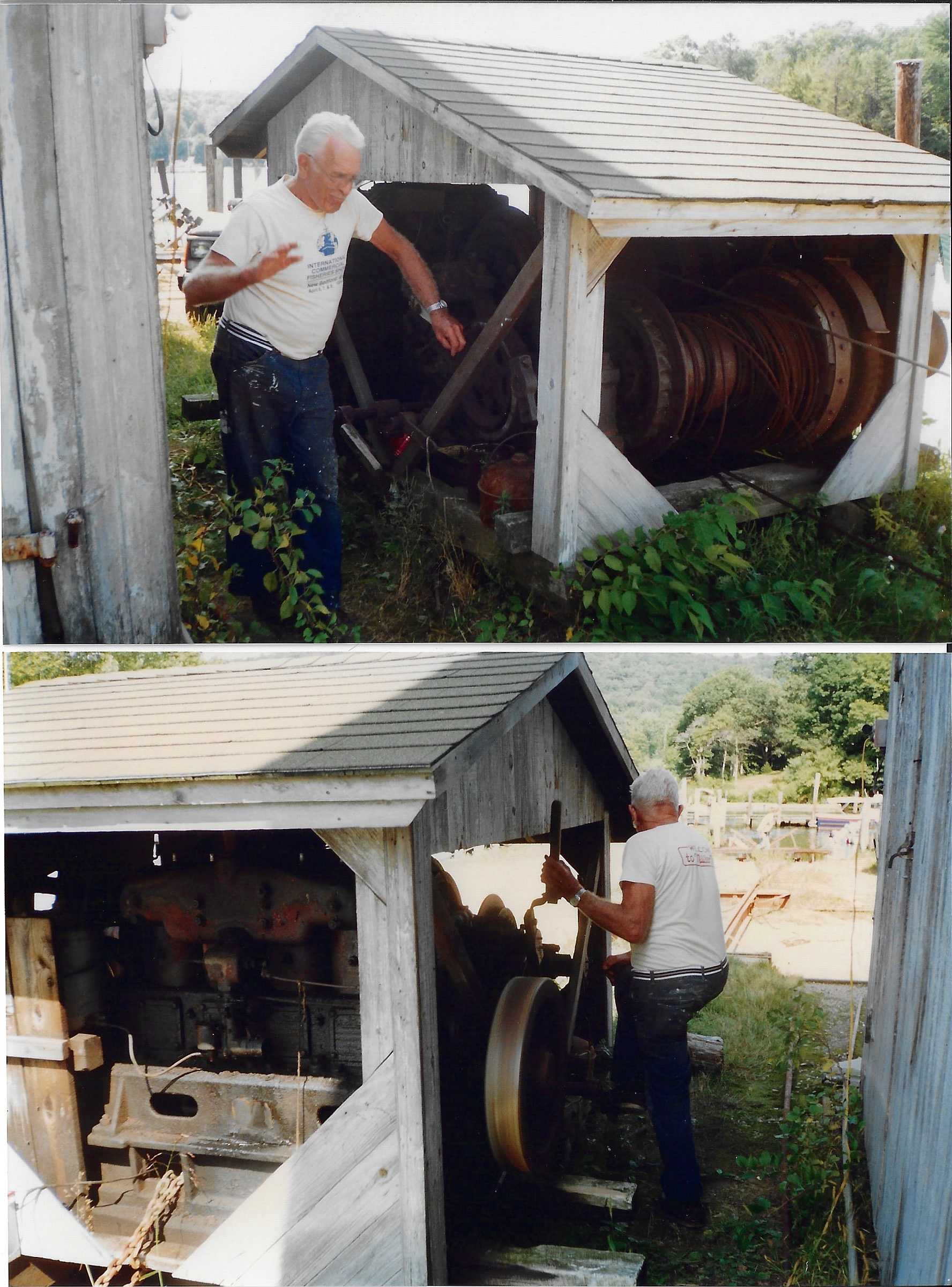 Leland Reynolds at the Bridgeport winch
Leland Reynolds at the Bridgeport winch
NISCA was found stored in the south shed at Reynold’s Garage and Marine in Lyme, CT. Ted found out that NISCA had been hauled and rescued after a permanent leak had required frequent bailing. Once safe ashore it was found to be restorable and Ted Crosby bought her in August of 1989 from Chris Kyle with a ‘restored’ electrical system and in seaworthy condition. Soon after launching in Hamburg Cove Ted decided to open the aft head through hull fitting only to have the entire fitting pull lose and a gusher of water flowing freely. The new owner went home that night without his shirt. It had found it’s way into the hole. There’s a moral here…
Hauled at Deep River in November of 1989 work started at the newly built Reynolds’ Spring Street boat shed alongside the 42’6″, completely original William Hand Jr. designed LITTLE GULL II built by The Herreshoff Manufacturing Co. in 1929, then owned by Tucker Reynolds. Tucker had rescued LITTLE GULL II from a beach on Long Island.
Work on NISCA started with removing the engine assisted by Glenn Jenkins and Tucker Reynolds. Bob Mautner and Ted began removing the garboard and keel while Jill (Mautner) wooded the hull. Early spring of 1990 we found the keel and apron to be in bad repair. The keel, stem, and apron were laid along the lines of the old keel and stem and by August Bob had completed the keel and apron and mating all the floor timbers and longitudinal frames.
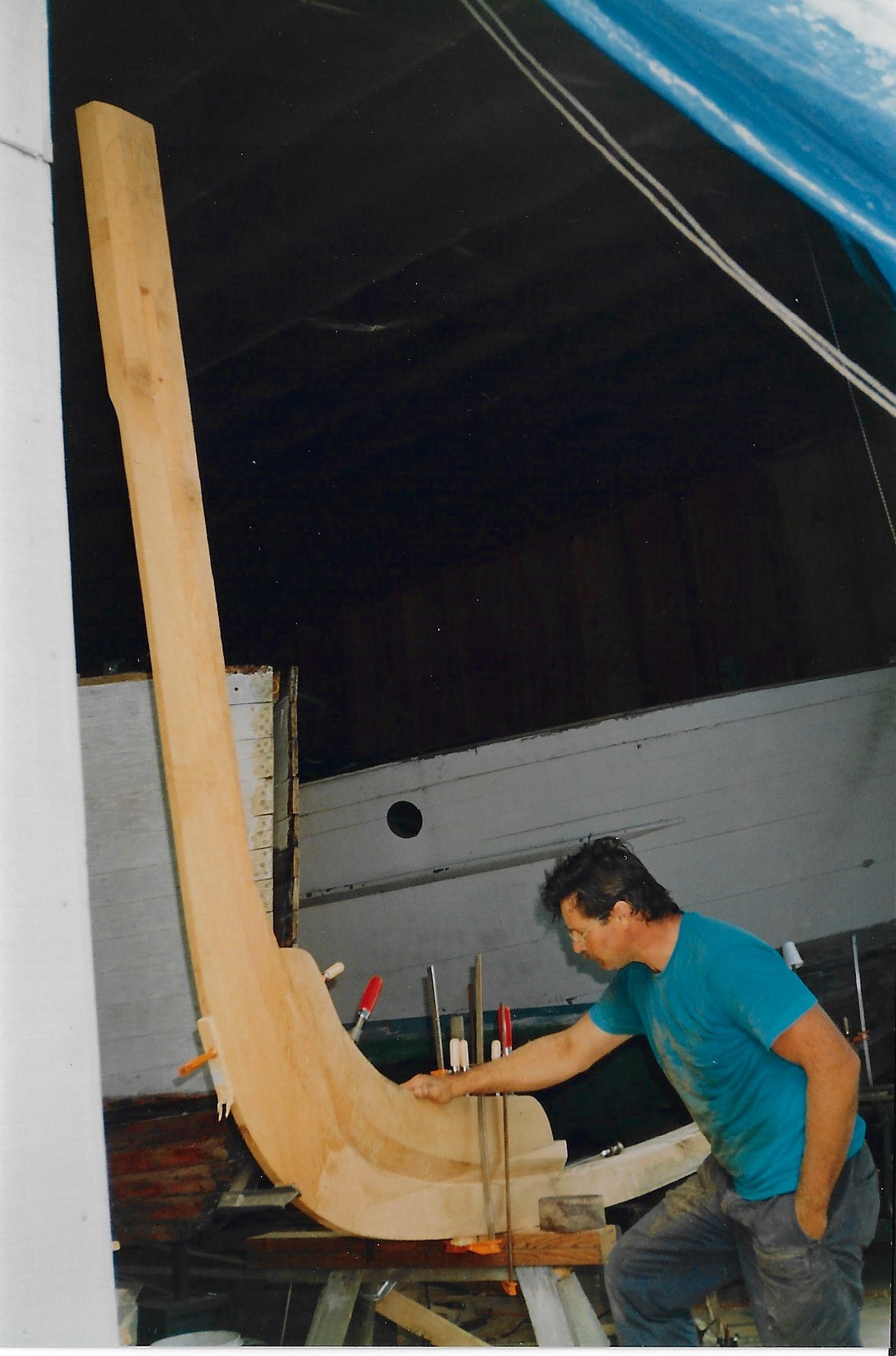 The winter of 1991 was spent removing the covering boards. Ed Nelson and Ted steamed 100 raw sawn, white oak ribs into place. The rib stock was cut fresh in northeast Connecticut and steamed quickly (in about 20 minutes). Early in the spring Doug Soper and Gill Plumb drilled the shaft and rudder logs as Doug Ahlberg began roughing out the new saloon and covering boards. We were helped along by finding and buying out the remains of a local lumber yard’s remaining supply of teak at $4 a board foot. By the end of the work teak had gone over $10 a foot and more. Bob meanwhile restored the transom’s feather boards and framing. Clay Duplessis drafted and put together the glued up the deck timbers from the geometry taken from Little Gulls’ deck lines. In the process of removing the old saloon and fore deck planking, we discovered the remnants of a past galley fire. Charred undersides of the foredeck and deck frames had been left in place and covered over with masonite.
The winter of 1991 was spent removing the covering boards. Ed Nelson and Ted steamed 100 raw sawn, white oak ribs into place. The rib stock was cut fresh in northeast Connecticut and steamed quickly (in about 20 minutes). Early in the spring Doug Soper and Gill Plumb drilled the shaft and rudder logs as Doug Ahlberg began roughing out the new saloon and covering boards. We were helped along by finding and buying out the remains of a local lumber yard’s remaining supply of teak at $4 a board foot. By the end of the work teak had gone over $10 a foot and more. Bob meanwhile restored the transom’s feather boards and framing. Clay Duplessis drafted and put together the glued up the deck timbers from the geometry taken from Little Gulls’ deck lines. In the process of removing the old saloon and fore deck planking, we discovered the remnants of a past galley fire. Charred undersides of the foredeck and deck frames had been left in place and covered over with masonite.
By February, 1992, Clay was finished with foredeck and saloon deck frames and started on the transom underlayment planks. By winter the re-sawn Honduran mahoghany planks were in place and Richard Stainer had begun 22 coats of sealer and varnish followed by the name lettering. The planks themselves came from an abandoned (1970’s) local boat building project and were found in 16′ by 20″x 8 quarter lengths. By the summer of 1992 Richard Fewtrell had spiled and bent the new bottom planks and had begun the rebuilding of the aft cabin. The aft cabin was duplicated from the lines of the aft cabin of BLUE MOON, a William Hand Jr. 38′ cruiser built around 1930 and owned originally by Leland Reynolds, then berthed in Hamburg Cove. Doug Ahlberg designed and built the new main cabin from the rough lines of LITTLE GULL II and photos of NISCA’s previous saloons. The covering boards and rub rails were on soon after Richard had the planking finished while Clay Duplessis built the deck timbers for the house and foredeck. Richard’s main contribution was in replanking the hull below the waterline which included replacing some of the original topside planks though many remain today. He is also responsible for the aft cabin which was found to have been extensively changed in prior rebuilds (1930 & 1940’s). It was rebuilt adhering to the design Hand used in some of the drawings produced in the 1920’s.
Nisca, today (2021), has the original interior fore and aft. the bunks forward along with the original head forward have been kept. All the port lights have reverted to the original round design. The topside planking above the waterline, the original deck and mid clamp and hard chines, that all William Hand designs are known for between 1920 and the motor sailor designs, remain today. The main saloon has retained all the charm and warmth from being first totally enclosed in the 1930’s. Leland Reynolds remembered NISCA being a ‘wet’ boat when he cruised aboard when he was a boy during trips out on Long Island Sound.



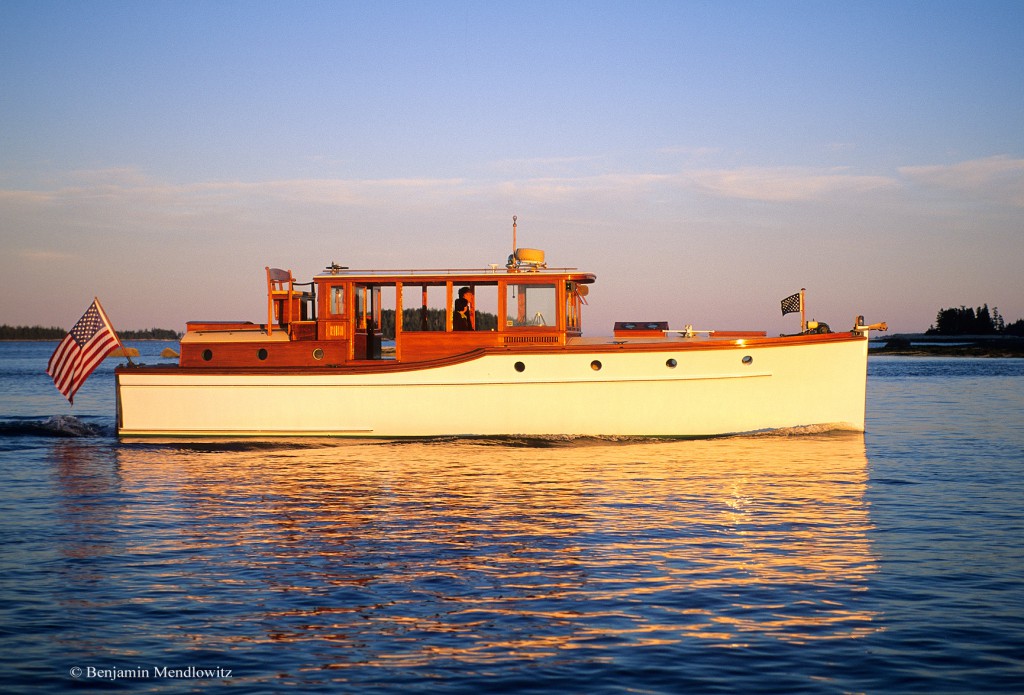
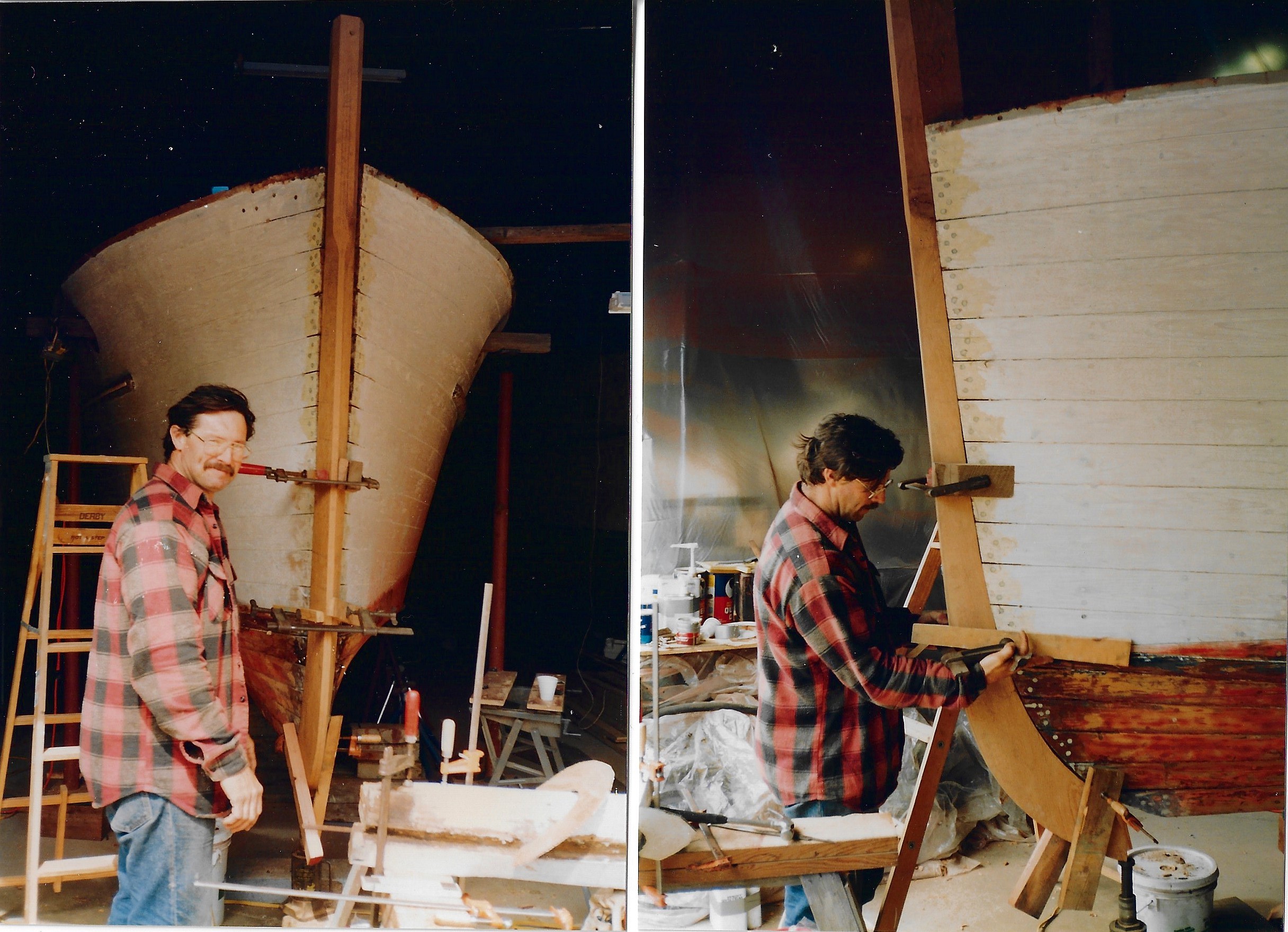 The stem, Bob Mautner
The stem, Bob Mautner 